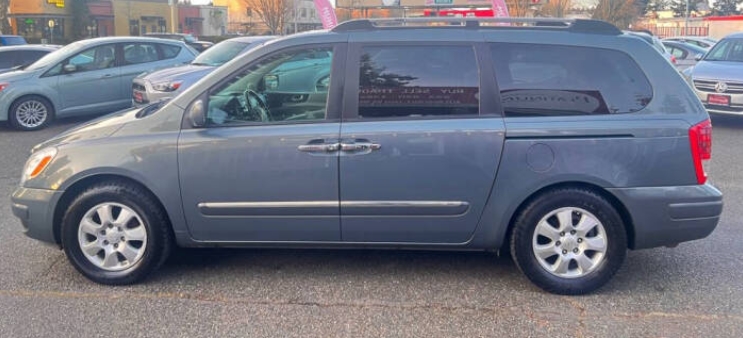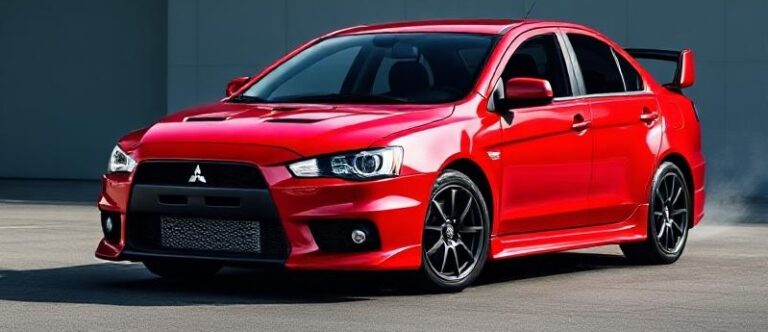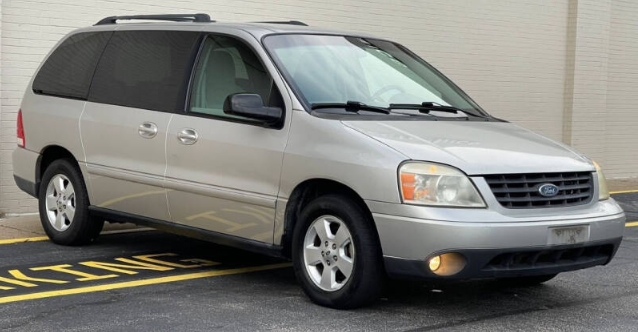A Calculated Gamble: The Brief and Telling Evolution of the Hyundai Entourage
In the sprawling chronicle of the automotive industry, some vehicles become legends, defining generations and dominating sales charts for decades. Others flash brightly for a moment, serving as a footnote or a lesson learned. The Hyundai Entourage falls firmly into the latter category. For just three short model years, it was Hyundai’s first and, to date, only foray into the fiercely competitive North American minivan market. Though its time on showroom floors was fleeting, the Entourage’s story is a fascinating case study in brand ambition, market timing, platform sharing, and the seismic shifts in consumer preference that defined the late 2000s.
The Genesis: Ambition in a Crowded Field
To understand the Entourage, one must first understand the Hyundai of the early 2000s. The South Korean automaker was in the midst of a radical transformation. Shedding its reputation as a purveyor of purely budget-oriented vehicles, Hyundai was aggressively moving upmarket, earning accolades for improved quality, sophisticated engineering, and daring design with models like the Sonata sedan and the Santa Fe SUV. The company’s confidence was bolstered by its revolutionary “America’s Best Warranty”—a 10-year/100,000-mile powertrain warranty that directly challenged the perceived reliability of its Japanese and American competitors.
By the mid-2000s, the minivan segment was a lucrative, if brutal, battleground. Dominated by the titans—the Dodge Grand Caravan, the Honda Odyssey, and the Toyota Sienna—it was a market where brand loyalty was fierce and innovation was constant. For an ascendant brand like Hyundai, conquering this segment would be the ultimate validation. It would prove they could build a safe, reliable, and feature-rich family hauler capable of standing shoulder-to-shoulder with the very best.
However, developing a new vehicle platform from scratch is a monumental and costly undertaking. Fortunately, Hyundai had an ace up its sleeve: its corporate sibling, Kia. Since Kia’s bankruptcy and subsequent acquisition by Hyundai in 1998, the two companies had increasingly leveraged platform sharing to reduce development costs and speed up product launches. Kia had already found moderate success with its Sedona minivan (known as the Carnival in other markets). For its second generation, the Sedona was completely redesigned on a new global platform. This new, highly-rated platform would become the foundation for Hyundai’s minivan gambit. The Hyundai Entourage was born not on a clean design sheet, but as a rebadged and strategically repositioned twin of the second-generation Kia Sedona.
.
THIS could come in handy for your auto garage (and everywhere else!):

.
The Debut: The 2007 Model Year
The Hyundai Entourage made its official debut at the Chicago Auto Show in February 2006, arriving in dealerships later that year as a 2007 model. While it shared its chassis, powertrain, and core body structure with the Kia Sedona, Hyundai designers made subtle but important changes to differentiate it. The Entourage featured a unique front fascia with a chrome-laden, single-bar grille, different headlamps, and a more sculpted hood, all designed to align it with Hyundai’s contemporary design language. The rear was also given a distinct look with different taillights and badging.
Under the hood, the Entourage was impressively equipped. It came with a single powertrain option: Hyundai’s powerful and smooth 3.8-liter Lambda V6 engine. This all-aluminum, DOHC 24-valve engine produced a robust 250 horsepower and 253 lb-ft of torque (figures that were slightly higher than the Sedona’s due to tuning), paired with a standard five-speed automatic transmission with Shiftronic manual control. This powertrain provided confident acceleration and smooth cruising, placing it squarely in competition with the V6 offerings from Honda and Toyota.
Where the Entourage truly aimed to make its mark was on value, features, and safety. It was launched with a three-tier trim level structure:
- GLS (Base Trim): The entry-level GLS was anything but spartan. It came remarkably well-equipped with standard features that were often optional on its competitors. These included Electronic Stability Control (ESC) with traction control, anti-lock brakes (ABS) with electronic brake-force distribution, six standard airbags (dual front, front-seat side-impact, and full-length side curtain), and active front head restraints. Comfort and convenience features included 16-inch wheels, three-zone climate control (front and rear), a CD/MP3 audio system, power windows and locks, and keyless entry.
- SE (Mid-Level Trim): The SE was positioned as the volume model, adding the most desirable minivan features. It built upon the GLS by including dual power sliding side doors, 17-inch alloy wheels, a roof rack, fog lights, steering wheel-mounted audio controls, a power driver’s seat, and an auto-dimming rearview mirror with a HomeLink universal transceiver. This trim level directly targeted the heart of the minivan market, offering premium family-friendly features at a competitive price point.
- Limited (Top-Tier Trim): The range-topping Limited model transformed the Entourage into a near-luxury family shuttle. It included all the features of the SE and added a suite of premium appointments: leather seating surfaces, heated front seats, a power tailgate, a power sunroof, an upgraded Infinity premium audio system with a 6-disc CD changer, power-adjustable pedals, and premium woodgrain or metalgrain interior trim accents.
Hyundai’s marketing push heavily emphasized safety. Their strategy paid off handsomely when the 2007 Entourage earned the highest possible five-star crash test rating from the National Highway Traffic Safety Administration (NHTSA) for all frontal and side-impact tests. Furthermore, the Insurance Institute for Highway Safety (IIHS) named it a “Top Safety Pick,” its highest honor. Armed with top safety scores, a powerful V6, and Hyundai’s industry-leading warranty, the Entourage entered the market as a Trojan horse of value and security.
The Sophomore Shuffle: The 2008 Model Year
For its second year, Hyundai simplified the Entourage lineup, a move likely intended to streamline production and reduce potential sales cannibalization with its Kia Sedona twin. The mid-level SE trim was discontinued for 2008. The lineup now consisted of only the base GLS and the top-tier Limited.
To ensure customers could still access popular features, Hyundai bundled many of the former SE’s key items into a new “Popular Equipment Package” for the GLS trim. This package included the crucial dual power sliding doors, 17-inch alloy wheels, and other amenities, effectively allowing buyers to create a vehicle very similar to the previous year’s SE. The Limited trim saw minor updates, with the Infinity premium sound system becoming a standard feature rather than part of an optional package. Otherwise, the 2008 Entourage was largely a carryover, continuing to offer the same strong value and safety proposition as the inaugural model.
The Final Curtain: The 2009 Model Year and Discontinuation
The 2009 model year marked the beginning of the end for Hyundai’s minivan. The Entourage was produced for 2009, but in extremely limited numbers and with virtually no changes from the 2008 model. By this point, the writing was on the wall. A perfect storm of external and internal factors had conspired against the well-intentioned vehicle.
1. The Great Recession: The global financial crisis of 2008 sent the auto industry into a tailspin. Sales plummeted across the board, and consumers, facing economic uncertainty and record-high gas prices, shied away from larger, less fuel-efficient vehicles like minivans.
2. The Rise of the Crossover: Consumer tastes were dramatically shifting. Families were increasingly opting for three-row crossover SUVs, which offered similar passenger capacity and all-wheel-drive capability in a package perceived as more stylish and modern. Hyundai itself was capitalizing on this trend with its popular Santa Fe and the newly introduced, more luxurious Veracruz.
3. Internal Competition: The Entourage was simply too similar to the Kia Sedona. With both brands often housed in adjacent or nearby dealerships, the two models competed directly for the same customers. This internal redundancy made little strategic sense, and it became clear that the Hyundai-Kia Automotive Group only needed one minivan contender in the North American market. Given the Sedona’s established nameplate, the Entourage was the logical choice for elimination.
Hyundai officially announced the discontinuation of the Entourage in the United States after the abbreviated 2009 model year (it lingered for one more year until 2010 in Canada). Sales had never met expectations, and the market forces were simply too strong to overcome.
Legacy and Retrospective
The Hyundai Entourage, produced from 2007 to 2009, remains a curious and telling chapter in the company’s history. It was not a failure of engineering or product planning in a vacuum. By all objective measures, the Entourage was a very good minivan. It was powerful, spacious, comfortable, and one of the safest vehicles in its class. It delivered on the Hyundai promise of exceptional value backed by an unbeatable warranty.
Its failure was one of timing and strategy. It arrived at the precise moment the minivan market began to contract and the crossover craze began to explode. It entered a segment where brand heritage was paramount and found itself overshadowed by its own corporate twin.
Yet, the Entourage was not without a legacy. It demonstrated Hyundai’s confidence and willingness to challenge the established order in any segment. The lessons learned from its brief run—about the importance of distinct product identity and the unforgiving nature of market timing—undoubtedly informed the brand’s future strategy. Today, Hyundai dominates the family-hauler market not with a minivan, but with the wildly successful three-row Palisade SUV. In many ways, the Palisade is the spiritual successor to the Entourage: a vehicle that delivers premium features, bold design, and tremendous value, but in a package perfectly aligned with the desires of the modern family. The short, quiet journey of the Hyundai Entourage was a necessary, if expensive, step on the road to that success.







